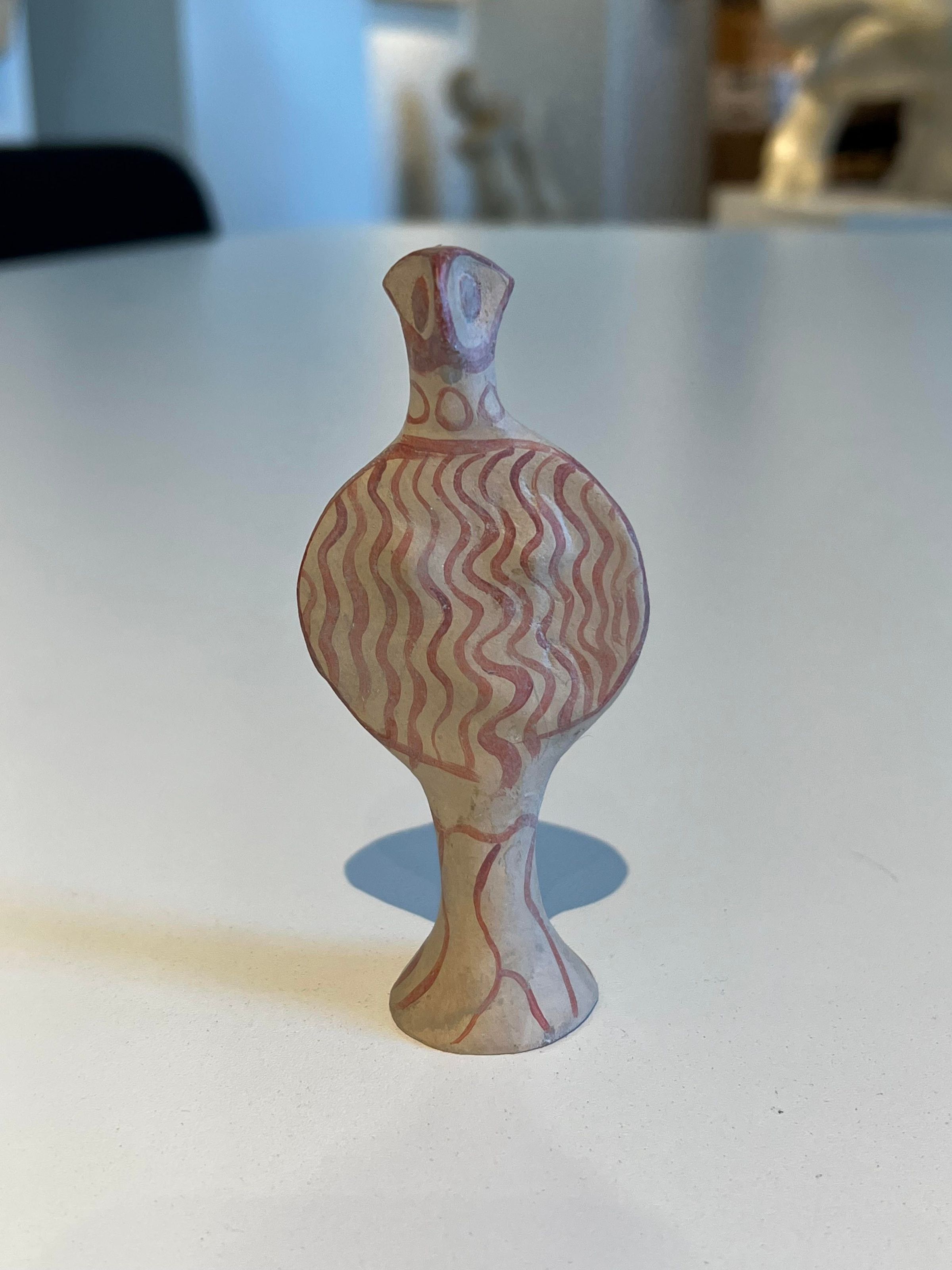Mycenaean Phi Figurine
Name/Title
Mycenaean Phi FigurineEntry/Object ID
22G05261Description
Standing female figure with circular disk-shaped torso. The figure wears a garment covering the torso. The figure has a triangular-shaped head with pointed nose and large eyes. Resin copy of terracotta original.Type of Sculpture
StatuetteArtwork Details
Medium
TerracottaSubject
Phi figurineContext
These early terracotta figurines come from the area of ancient Mycenae, Greece. The three most common forms of these figurines are named for their resemblance to the Greek letters Phi, Psi, and Tau. It is generally agreed that all the types represent female figures due to the presence of protruding breasts. There is no archaeological evidence for figurines on the Greek Mainland before the end of the 15th century BCE, which has led experts to suggest that inspiration for these figurines may have come from contact with the Minoan civilization. Examples of these figurines have been found throughout much of the Greek mainland as well as many Greek Islands, and have frequently been found in the context of shrines, graves, and houses.The exact function of the figurines is not known, and over the decades scholars have argued that the archaeological contexts could suggest use of the figurines as toys, votive offerings or grave offerings, and popular or state-sponsored cult practices. The emphasis on the breasts, and the rare occasions that they carry a child, have led scholars to believe that there is a connection to fertility or a fertility goddess cult. The circular torso of Mycenaean Phi figurines is believed to depict the figure clasping its hands below the stomach, also known as the bas bras position. This pose has been interpreted as a welcoming and nurturing feminine gesture. The entire disc-shaped torso, front and back is decorated with wavy vertical lines, believed to indicate a thin, loose-fitting garment on Mycenaean Psi and Phi figurines. Six circles are painted on the neck of the figurine which are believed to represent a necklace on other examples of Phi figurines. The base of the figure flares out, which may suggest a long robe is being depicted and, the lines painted on the base would indicate folds of this garment. Recent studies have suggested the role that figurines played in reinforcing gender roles in Mycenaean society. A 2020 analysis interpreted the role that figurines played in conveying gender ideals through emphasizing the type of dress, adornment, and demeanor valued in becoming a woman in Mycenaean society.Collection
Mycenaean GreeceMade/Created
Date made
circa 1400 BCE - circa 1300 BCETime Period
Bronze AgeEthnography
Culture/Tribe
Greek - Mycenaean

